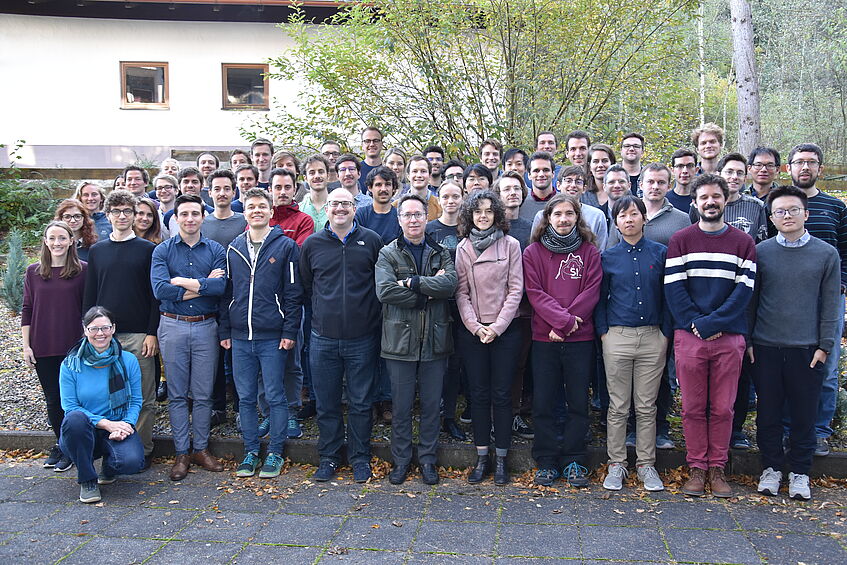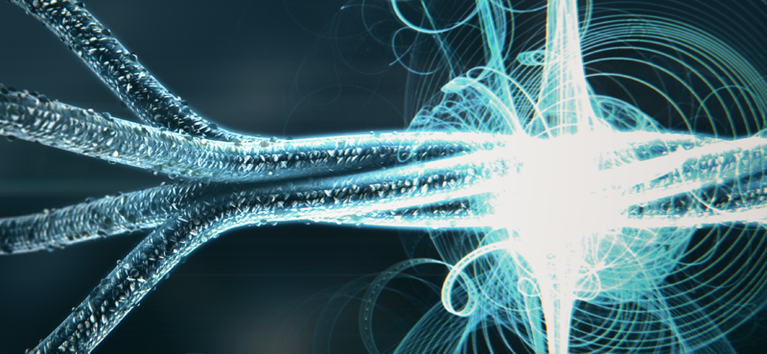ExP04 - Quantum Information Protocols with Limited Resources
Ignacio Cirac
Abstract:
Abstract:
After many years of intensive research, it is now possible to control and manipulate tens of qubits with high precision. This has been achieved with trapped ions, cold atoms, superconductors, and photons, and it is very likely that other technologies will soon catch up. Even though a full-fledged quantum computer is still very far in time, it is expected that in the next few years quantum processors composed of up to hundred qubits will be available, and that one will be able to reliably perform more than thousand quantum gates without having to resort to error correction schemes. Under these conditions, can we take advantage of those small systems? And, what can we learn?
The long-term goals and visions of this project are to: (i) develop applications and protocols which can be carried out with small quantum processors, and that outperform existing and planned classical devices; (ii) use quantum systems to learn few/many-body quantum phenomena; (iii) Revisit classical algorithms and protocols inspired by quantum devices; (iv) bridge the gap between abstract results and specific experimental setups.
PI Ignacio Cirac on
Quantum Information Protocols with Limited Resources

Team:
Subproject Leader: Ignacio Cirac
PostDoc: Flavio Baccari
PhDs: Esther Cruz
Master: Benjamin Schiffer
Admins: Eileen Welz, Elena Wiggert
Publications:
The quantum marginal problem for symmetric states: applications to variational optimization, nonlocality and self-testing
A. Aloy, M. Fadel, J. Tura
Preprint (2020)
[arXiv:2001.04440]
Algorithms for quantum simulation at finite energies
S. Lu, M. Carmen Bañuls, J. I. Cirac
Preprint (2020)
[arXiv:2006.03032]
Entanglement marginal problems
M. Navascues, F. Baccari, A. Acin
Preprint (2020)
[arXiv:2006.09064]
Ultrafast molecular dynamics in terahertz-STM experiments: Theoretical analysis using Anderson-Holstein model
T. Shi, J. I. Cirac, E. Demler
Phys. Rev. Research 2, 033379 (2020)
[arXiv:1904.00932]
A variational approach for many-body systems at finite temperature
T. Shi, E. Demler, J. I. Cirac
Phys. Rev. Lett. 125, 180602 (2020)
[arXiv:1912.11907]
Generation of Photonic Matrix Product States with a Rydberg-Blockaded Atomic Array
Z. Wei, D. Malz, A. González-Tudela, J. I. Cirac
preprint (2020)
[arXiv:2011.03919]
Device-Independent Certification of Genuinely Entangled Subspaces
F. Baccari, R. Augusiak, I. Šupić, Antonio Acín
Phys. Rev. Lett. 125, 260507 (2020)
[arXiv:2003.02285]
Bounding sets of sequential quantum correlations and device-independent randomness certification
J. Bowles, F. Baccari, A. Salavrakos
Quantum 4, 344 (2020)
[arXiv:1911.11056]
Matrix Product States: Entanglement, symmetries, and state transformations
D. Sauerwein, A. Molnar, J. I. Cirac, B. Kraus
Physical Review Letters 123, 170504 (2019)
[arXiv:1901.07448]
Unveiling quantum entanglement in many-body systems from partial information
I. Frérot, F. Baccari, A. AcínPRX
Quantum 3, 010342 (2022)
Enhancing generative models via quantum correlations
X. Gao, E. R. Anschuetz, S.-T. Wang, J. I. Cirac, M. D. Lukin
Phys. Rev. X 12, 021037 (2022)
Symmetries and local transformations of translationally invariant Matrix Product States
M. Hebenstreit, D. Sauerwein, A. Molnar, J. I. Cirac, B. Kraus
Phys. Rev. A 105, 032424 (2022)
Sequential generation of projected entangled-pair states
Z.-Y. Wei, D. Malz, J. I. Cirac,
Phys. Rev. Lett. 128, 010607 (2022)
Locally accurate tensor networks for thermal states and time evolution
Á. M. Alhambra, J. I. Cirac
PRX Quantum 2, 040331 (2021)
Computable Rényi mutual information: Area laws and correlations
S. O. Scalet, A. M. Alhambra, G. Styliaris, J. I. Cirac
Quantum 5, 541 (2021)
Quantum algorithms for powering stable Hermitian matrices
G. González, R. Trivedi, J. I. Cirac
Phys. Rev. A 103, 062420 (2021)
Modeling and mitigation of cross-talk effects in readout noise with applications to the Quantum Approximate Optimization Algorithm
F. B. Maciejewski, F. Baccari, Z. Zimboras, M. Oszmaniec
Quantum 5, 464 (2021)
Bounding the fidelity of quantum many-body states from partial information
M. Fadel, A. Aloy, J. Tura i Brugués
Phys. Rev. A 102, 020401 (2020)
Gaussian matrix product states cannot efficiently describe critical systems
Adrián Franco-Rubio, J. Ignacio Cirac
preprint: arXiv.2204.02478
Error propagation in NISQ devices for solving classical optimization problems
Guillermo González-García, Rahul Trivedi, J. Ignacio Cirac
preprin arXiv.2203.15632
Large-N limit of spontaneous superradiance
Daniel Malz, Rahul Trivedi, Ignacio Cirac
preprint arXiv.2202.05197
Preparation and verification of tensor network states
E. Cruz-Rico, F. Baccari, J. Tura, N. Schuch, J. I. Cirac
preprint arXiv.2105.06866
Adiabatic Spectroscopy and a Variational Quantum Adiabatic Algorithm
B. Schiffer, J. Tura, J. I. Cirac
preprint arXiv.2103.01226
Certificates of quantum many-body properties assisted by machine learning
Borja Requena, Gorka Muñoz-Gil, Maciej Lewenstein, Vedran Dunjko, Jordi Tura
preprint arXiv.2103.03830
Convergence guarantees for discrete mode approximations to non-Markovian quantum baths
Rahul Trivedi, Daniel Malz, J. Ignacio Cirac
preprint arXiv.2107.07196
Simulatability of locally-interacting open quantum spin systems
Rahul Trivedi, J. Ignacio Cirac
preprint arXiv.2110.10638
Tensor networks and efficient descriptions of classical data
Sirui Lu, Márton Kanász-Nagy, Ivan Kukuljan, J. Ignacio Cirac
preprint arXiv.2103.06872
